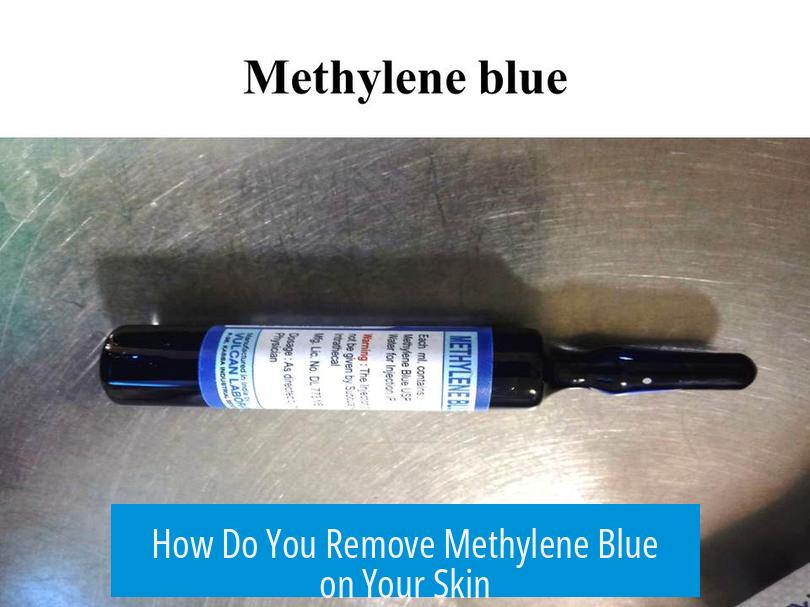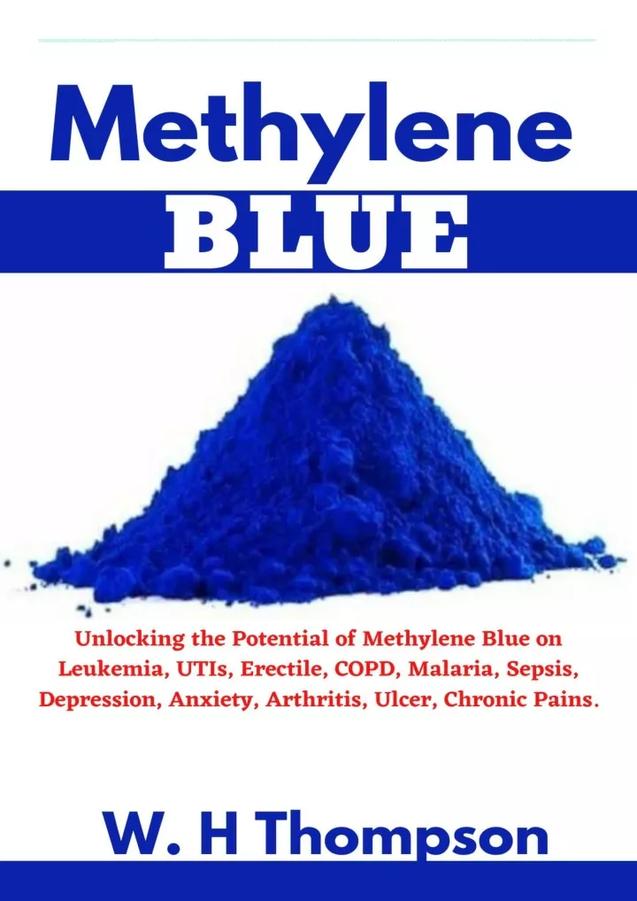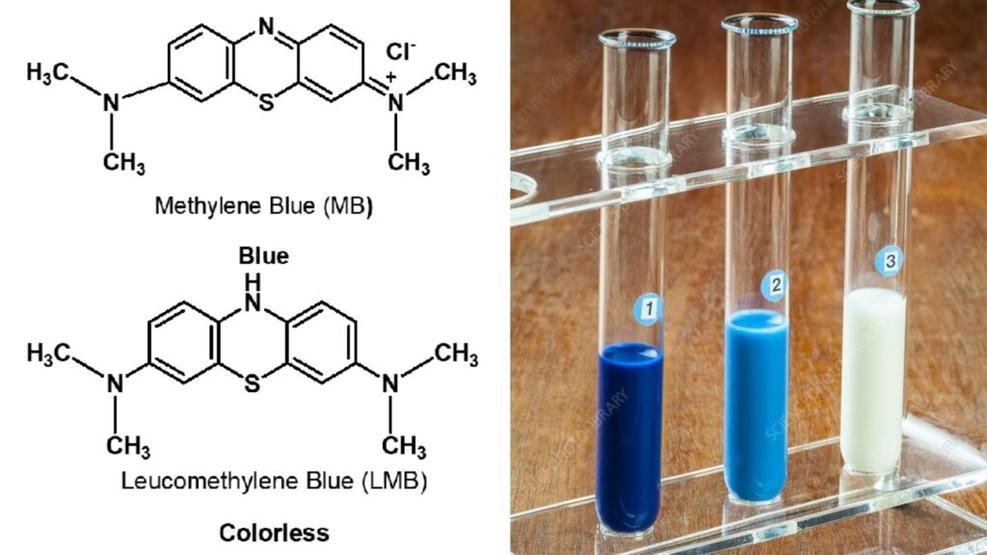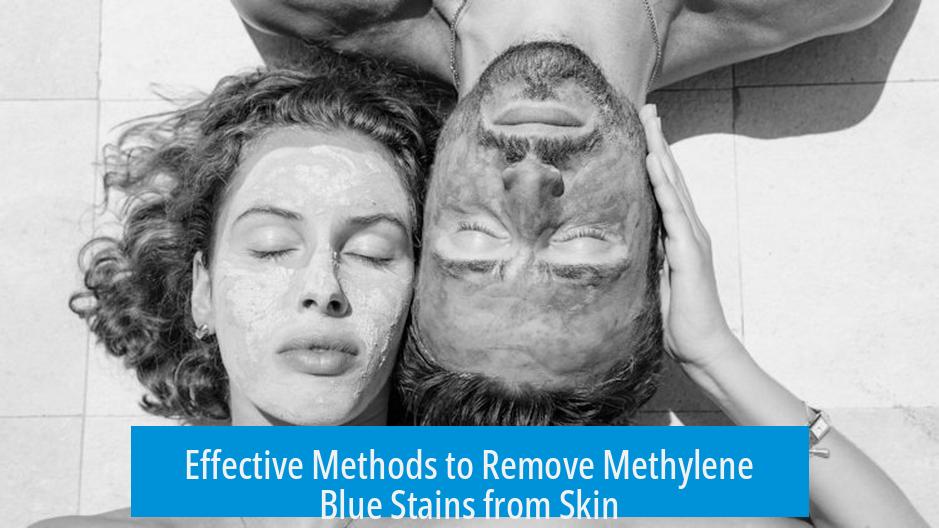How Do You Remove Methylene Blue on Your Skin?

To remove methylene blue from the skin, first wash with water to remove excess dye and contaminated clothing. Then, wipe the skin with 70% isopropyl alcohol or ethyl alcohol to eliminate most staining on healthy skin. Next, apply pure ascorbic acid powder on wet skin to chemically reduce the blue dye to its colorless form. Finally, rinse thoroughly with water to wash away residue and prevent re-staining.
Understanding Methylene Blue Staining on Skin

Methylene blue usually does not penetrate intact, healthy skin. However, it stains areas where the skin is damaged or dead, such as near fingernails, sores, or dry patches. This uneven staining makes removal challenging. Blue color on healthy skin tends to wash off easier, whereas splotches on dead skin or wounds persist.
This staining characteristic explains why methylene blue remains visible in some spots even after cleaning. The dye binds more strongly to compromised skin tissues.

Initial Cleaning Using Alcohols
Isopropyl alcohol at 70%, commonly used as rubbing alcohol, is effective for removing methylene blue from healthy skin areas. Applying it with a wipe or cotton ball helps dissolve and lift the dye.

- Ethyl alcohol can also remove methylene blue from skin reliably.
- Although alcohol removes most dye from healthy skin, stains on dead or damaged skin often remain.
- This step is optional but helpful as a preliminary cleaning method.
Alternative solvents such as vodka, which contain ethanol, also assist in dissolving the dye. Water rinsing alone removes some dye but less effectively than alcohol.
Reducing Methylene Blue to Its Colorless Form

Chemical Principle
Methylene blue can be chemically reduced to a colorless compound known as leuco-methylene blue. The leuco-form loses its blue color and can be rinsed off more easily from the skin.
This reduction is temporary; if not washed off, exposure to air allows the dye to re-oxidize and revert to blue.
Safe Reducing Agents for Skin
Not all reducing agents are suitable for skin. Thiosulfate, for example, is ineffective. However, vitamin C compounds are both effective and safe.
- Ascorbic acid (pure vitamin C) works well as a powder. It reduces the dye safely on skin.
- Sodium ascorbate (an ascorbic acid salt) is similarly effective.
- Sodium erythorbate (a food additive related to vitamin C) is expected to work, although less studied for this use.
Usage Instructions
- Use the powder form rather than a solution, as aqueous solutions degrade quickly when exposed to air.
- Sprinkle the powder onto wet skin and rub gently.
- The dye loses color as it reduces.
- Wash the area thoroughly with water immediately afterward.
- Failure to rinse properly may allow the dye to reappear through oxidation.
- Avoid contact with eyes; ascorbic acid powder can irritate eye tissues.
Step-by-Step Procedure for Removing Methylene Blue from Skin
- Remove any clothing stained with methylene blue.
- Wash the affected skin area with plenty of water to remove superficial dye.
- (Optional) Wipe the skin with 70% isopropyl alcohol or ethyl alcohol to remove dye from healthy skin.
- Sprinkle pure ascorbic acid powder onto wet skin and rub gently.
- Observe the blue stain fading as methylene blue converts to the colorless leuco form.
- Rinse thoroughly with water to remove reduced dye.
Following these steps ensures the dye is removed effectively and prevents the blue color from returning.
Safety Considerations
When removing methylene blue near the eyes, extra caution is needed. Vitamin C powders should not get into the eyes, as they may cause irritation. If methylene blue contaminates the eyes, professional medical attention is necessary. Self-treatment is not recommended for eye exposure.
For other areas, ascorbic acid and sodium ascorbate are safe and cause no significant irritation for most individuals.
Additional Solubility and Removal Notes
| Solvent | Effectiveness on Methylene Blue Stains | Comments |
|---|---|---|
| Water | Moderate | Removes loose dye but not stains on dead skin |
| Isopropyl Alcohol (70%) | High | Best for healthy skin; removes majority of blue color |
| Ethyl Alcohol | High | Similar efficacy to isopropyl alcohol |
| Vodka (Ethanol) | Moderate | May help but less pure and potent than disinfecting alcohols |
Summary of Key Points
- Methylene blue stains damaged skin more intensely than intact skin.
- Washing with water and alcohol removes dye from healthy skin but not completely from dead or damaged areas.
- Ascorbic acid powder chemically reduces methylene blue to a colorless form.
- Rinsing after reduction prevents the blue color from returning.
- Vitamin C derivatives are safe and effective reducing agents for skin application.
- Caution is required near eyes; seek medical care if contamination occurs.
How Do You Remove Methylene Blue on Your Skin?
Removing methylene blue from your skin is possible with a smart, three-step approach using water, alcohol, and vitamin C powder—and yes, it’s way less painful than it sounds! If you’ve ever gotten this notorious blue dye on your hands or face, you know it likes to make a dramatic, stubborn appearance. The good news? It’s manageable with some careful steps.
Let’s demystify the process, starting with what makes methylene blue such a clingy guest on your skin.
Why Methylene Blue Leaves Those Blue Splotches
Methylene blue is a crafty dye. It doesn’t easily soak through healthy, intact skin. However, it loves to nestle into dead or damaged skin—think around your fingernails or tiny cuts, even little sores. Imagine it as a cheeky raccoon sneaking into the cracks rather than the wide-open spaces.
This means when you wash your hands normally, those intensely blue patches on cuticle edges or rough spots stick around stubbornly. Healthy skin areas are easier to clean but still require some elbow grease.
The First Line of Defense: Water and Alcohol
Step one: ditch stained clothes, then wash the affected area with plenty of water. Water works well to remove fresh or light stains but won’t handle the tougher blue spots in dead skin areas.
If you want to up your game, grab some 70% isopropyl alcohol—yes, the same rubbing alcohol or disinfectant you used during the COVID frenzy. Wipe the skin gently. This alcohol will wipe most of the dye off healthy skin. However, blue splotches clinging to dead or damaged skin patches will stubbornly remain. If you don’t have rubbing alcohol, vodka (since it contains ethanol) might work too, but isopropyl remains the champion.
Pro tip: using alcohol is optional, but it makes your next step easier.
Turning Blue Invisible with Vitamin C Power
Here’s where science meets your practical needs—methylene blue has a colorless, “leuco” form it can convert to if you introduce a reducing agent.
When methylene blue loses its color by reduction, it becomes invisible and much easier to wash off. But here’s the catch: once exposed to air again, it reverts to that stubborn blue color. So, rinsing it off immediately is crucial.
Strong reducing agents exist, but not all of them play nice with your skin. Ascorbic acid—better known as vitamin C—and its cousin sodium ascorbate are the skin-friendly superheroes you can safely use.
These powders reduce the dye effectively and allow you to wash off the colorless form, ensuring the blue mess doesn’t return.
How to Use Ascorbic Acid to Erase Methylene Blue
The best part? You don’t need fancy solutions. Since ascorbic acid is unstable in liquid form exposed to air, it’s better to use it as a powder.
- Wet the stained skin thoroughly.
- Sprinkle pure ascorbic acid powder over the wet area.
- Rub it gently—watch the blue fade right before your eyes!
- Rinse the area with lots of water immediately after.
If you skip the rinsing, the dye mindfully reappears by catching some oxygen air. So, don’t skip this step—it’s essential.
Alternatively, sodium ascorbate or sodium erythorbate (a common sausage additive) may work similarly well. However, using powders instead of solutions is key for stability and effectiveness.
Some Precautions and Tips
- Be cautious when applying around your eyes. Ascorbic acid powder can irritate your eyes, so avoid contact completely.
- If blue dye gets into your eyes, don’t DIY! See an eye doctor immediately. Methylene blue in the cornea is nothing to play with.
- Wash any stained clothes or fabrics separately to avoid permanent blue splotches.
Why Rubbing Alcohol Alone Isn’t Always Enough
Rubbing alcohol is great for healthy skin but struggles with blue stains lodged in dead skin or small wounds. These spots keep their blue pride worthy of a stubborn stain award.
So, relying on alcohol alone might leave you looking like a smurf with blue freckles. Combining it with vitamin C dust is your best bet.
Personal Experience & Practical Takeaways
Imagine you’re a lab worker or someone handling methylene blue during a project—blue fingers can be a badge of honor, but they’re rarely welcome. Following this three-step routine keeps stains in check:
- Immediate water wash.
- Optional alcohol wipe for quick removal on healthy skin.
- Vitamin C powder rub followed by thorough rinsing.
This method makes blue stains vanish faster than you might expect, and without harsh chemicals. Plus, vitamin C treats your skin kindly—it’s a win-win!
Summary: Your Ultimate Methylene Blue Removal Cheat Sheet
| Step | Action | Why |
|---|---|---|
| 1 | Remove stained clothes; rinse skin with plenty of water | Removes fresh or superficial dye |
| 2 (optional) | Wipe with 70% isopropyl alcohol | Eliminates most dye on healthy skin |
| 3 | Sprinkle ascorbic acid powder on wet skin, rub gently, rinse thoroughly | Reduces dye color and allows complete removal |
Who said chemistry can’t save your skin? With a bit of vitamin C magic and routine cleaning, you can take methylene blue from stubbornly blue to purely clean in no time.
Next time you deal with this pesky dye, remember: water, alcohol (if you want), then trusty ascorbic acid powder. Your skin will thank you, and you won’t have to audition for a Smurf remake!





Leave a Comment